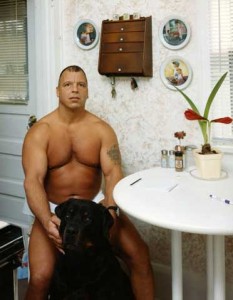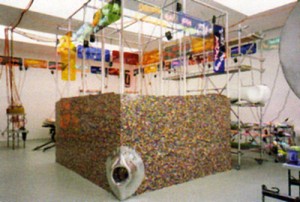For ‘ART AsiaPacific’ Magazine
Too many cooks spoil the broth, but a superabundance of curators doesn’t have to be tasteless. At least that is the lesson taught by “The Year of New Work: Contemporary Asian Photography,” a four-part exhibition at New York’s Japan Society organized by photography curators Noriko Fuku, Alice Rose George and Christopher Phillips. Beginning in November 2002, the external curators presented quarterly, themed exhibitions of contemporary photography and video by Japanese, Chinese and Korean artists in the new ‘Lobby Gallery.’
Most artwork in the four exhibitions came from the collection of JGS, Inc. (standing for Joy of Giving Something) a non-profit arts organization eager to partner with institutions to show its extensive photography collection. Besides supplying the art, JGS, Inc. brought the curators, each of whom acts as a specialist consultant for different parts of the collection. George, an independent curator, photo editor and art advisor who has worked with JGS for eleven years succinctly said, “We’re interested in whatever talent that is coming that hasn’t been before.” A quest for the new took the organization as far as Asia, where it began collecting work by emerging artists in the mid 90s.
The collection now includes work by artists familiar and new to New York audiences, a mix which was reflected in the exhibitions. The first show, ‘Character and Choice’ featured photographs by Nikki S. Lee, Yasumasa Morimura and Tomoko Sawada and delved into the theme of physical transformation. Lee’s makeovers as a skateboarder, a Hip-Hop diva and a senior citizen and 400 surprisingly diverse self-portraits taken by Sawada in a photo booth captured the artists’ chameleon-like ability to alter their appearances. ‘Flesh and Flames,’ the second show in the series, opened in Spring ’03 with photos of dying flowers by Nobuyoshi Araki, close-up shots of the aging Butoh dancer Kazuo Ohno by Miyako Ishiuchi, and images of Buddhist rituals in the Kumano Mountains by Risaku Suzuki.
If the first two exhibitions favored the human body and ritual, the final two shows focused on the collision of past, present and future. ‘Spatial Narratives,’ which opened in Summer ’03, featured a collaged scroll by Hong Hao, a scroll-like series of photos by Xing Danwen, photos by Tomoko Yoneda and Atta Kim and a video by the New York- based Korean artist Seoungho Cho. Cho’s work also appeared in the final installment, themed around the fast changing Asian cityscape. Photographers included Naoya Hatakeyama whose series ‘Slow Glass’ captures city lights at night though a car windshield and two Chinese artists: Beijing based Zhang Dali, who alters the appearance of buildings scheduled for demolition, and Weng Fen from Hainan Island in south China who takes high format photographs of the new cityscapes with children in the foreground.
The year-long exhibition is another demonstration of the increasing importance of Asian photography in New York. Though, the lobby venue seemed inappropriate for three curators with such international stature. (Despite the tranquil sounds of a waterfall and gorgeous black stone walls, it’s still a lobby.) But other shows are on the horizon in the city. Phillips, a curator at the International Center of Photography (ICP) who is co-curating an exhibition of Chinese photography with Wu Hung at the ICP and Asia Society opening June 2004, points out, “Slowly, you’re starting to see mainstream galleries, and photography galleries starting to recognize that this is an untapped body of work of extremely high quality, which we can all learn something from.”


